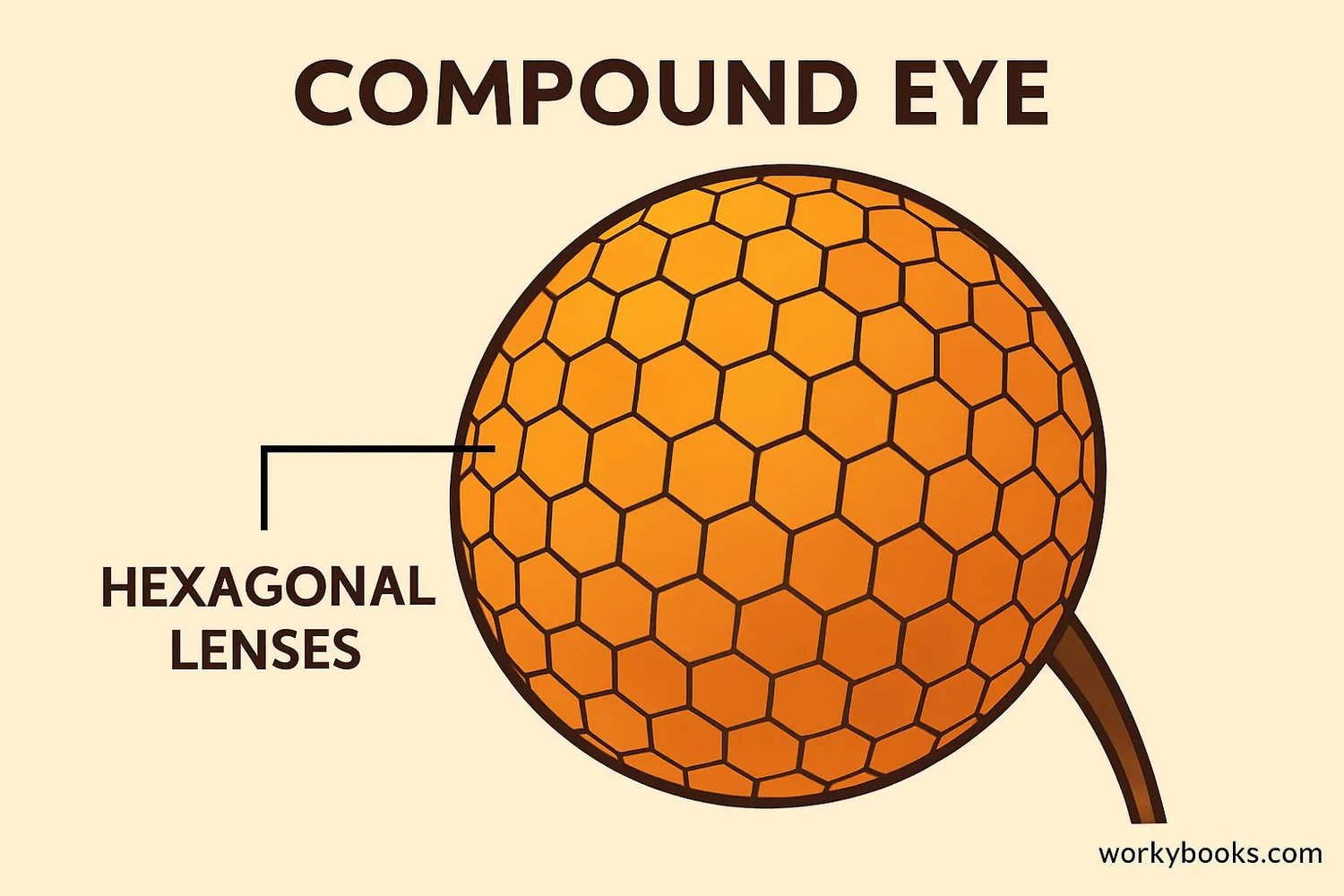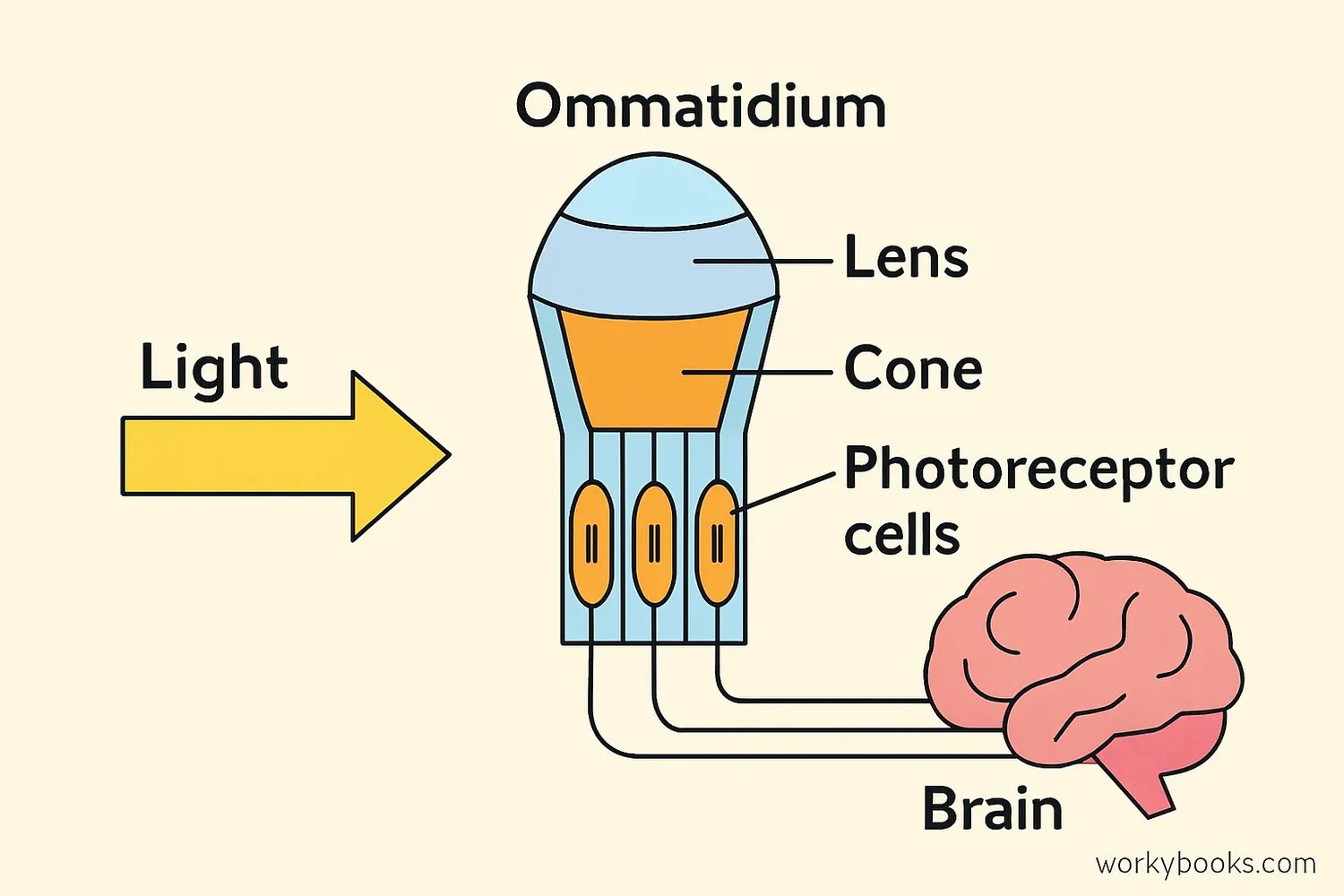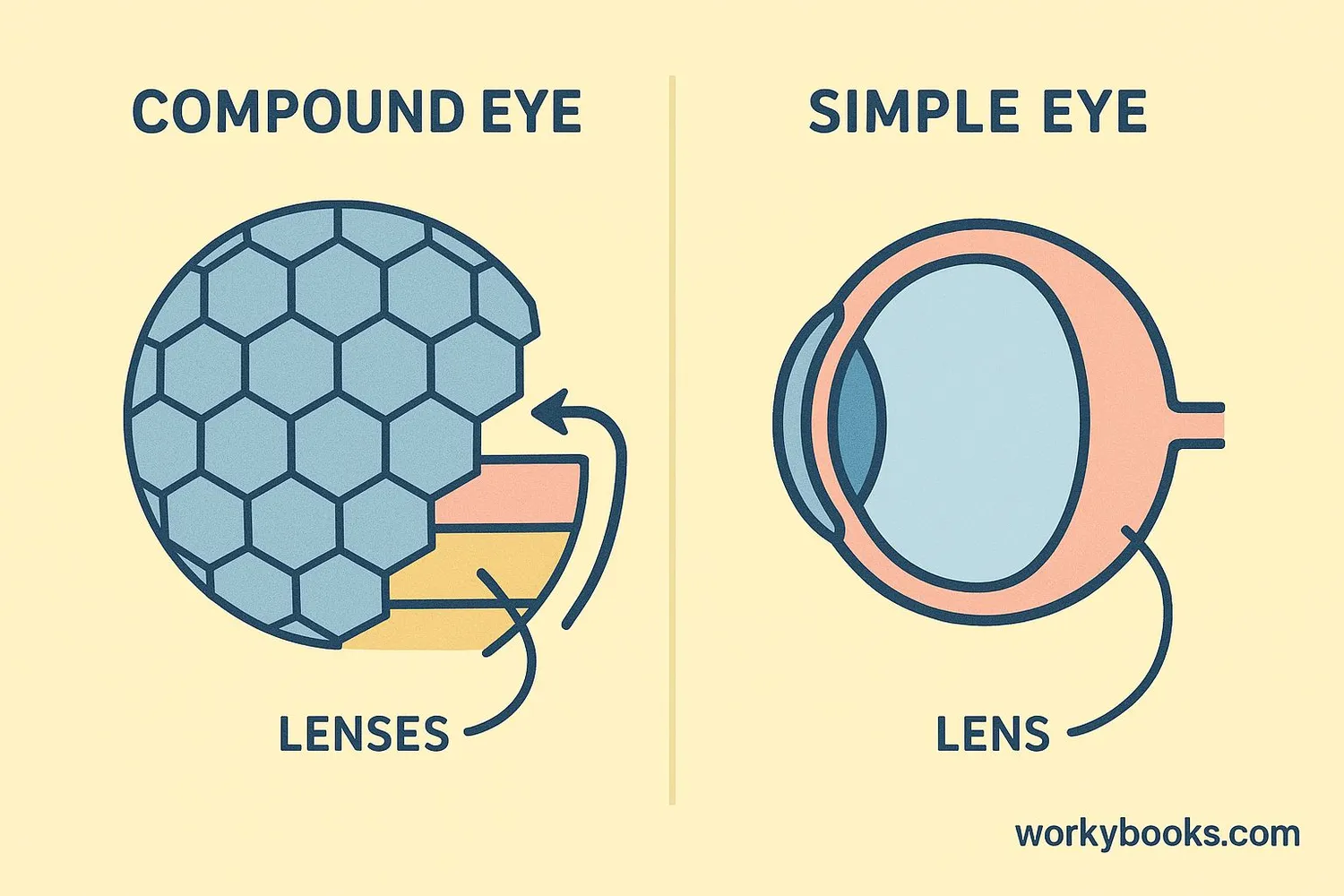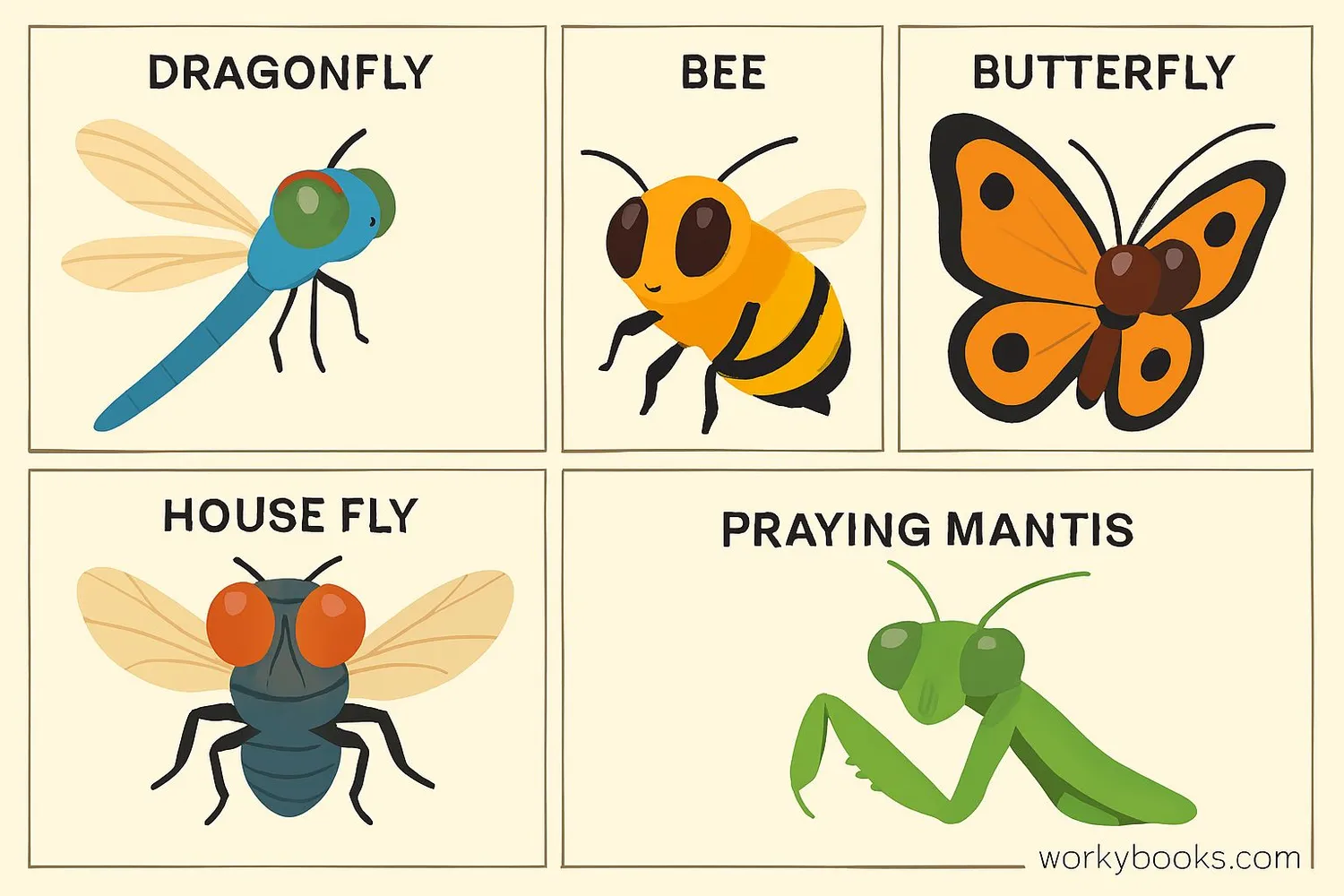Compound Eyes - Definition, Examples, Quiz, FAQ, Trivia
Discover how insects see the world differently with their special eyes!
What is a Compound Eye?

A compound eye is a special type of eye that many insects and crustaceans have. Instead of one big lens like human eyes, compound eyes are made up of thousands of tiny lenses called ommatidia. Each little lens captures a small piece of the visual world, and the insect's brain puts all these pieces together like a puzzle to form an image.
Think of a compound eye like a mosaic made of many small tiles. Each tile is a separate eye unit that sees a tiny part of the world. When all the tiles are put together, they create a complete picture. This unique design gives insects amazing abilities to detect movement and see in many directions at once!
Science Fact!
A dragonfly's compound eye has up to 30,000 lenses! That's why they're such excellent hunters.
How Compound Eyes Work

Compound eyes work differently than human eyes. Each tiny lens (called an ommatidium) is like a mini-eye with its own lens and light-sensitive cells. Here's how they work together:
Light Enters
Light enters through each tiny lens on the eye's surface
Focusing
Each lens focuses light onto photoreceptor cells
Signal Creation
Photoreceptor cells create electrical signals
Signal Processing
Signals travel to the insect's brain
Image Creation
The brain combines all signals to create one image
Compound eyes don't see as clearly as human eyes, but they have other amazing abilities:
• Wide field of view: Insects can see nearly 360 degrees around them
• Excellent motion detection: They can spot the tiniest movements
• Flicker fusion: They see fast movements that would look blurry to humans
• Polarized light detection: They can see light patterns invisible to us
Motion Detection!
A fly sees movement about 6 times faster than humans do. That's why they're so hard to swat!
Compound Eye vs Simple Eye

Eyes come in different types! While insects have compound eyes, humans and many animals have simple eyes. Let's explore the differences:
| Feature | Compound Eyes | Simple Eyes |
|---|---|---|
| Number of lenses | Many (hundreds to thousands) | One |
| Image clarity | Lower resolution | Higher resolution |
| Field of view | Very wide (up to 360°) | Limited (about 180°) |
| Motion detection | Excellent | Good |
| Depth perception | Limited | Good |
| Color vision | Often sees UV light | Typically sees visible light |
| Found in | Insects, crustaceans | Humans, mammals, birds |
While compound eyes can't see as clearly as simple eyes, they have advantages that help insects survive. Their wide field of view helps them spot predators, and their excellent motion detection helps them catch prey or avoid danger. Some insects even have both compound eyes and simple eyes!
Insects with Compound Eyes

Many insects have compound eyes. Here are some fascinating examples:
Dragonflies
Nearly 360° vision with up to 30,000 lenses per eye
Bees
See ultraviolet light patterns on flowers
Butterflies
Have the most detailed color vision of all insects
House Flies
See movements 6 times faster than humans
Praying Mantis
3D vision for accurately judging distances
Each insect's compound eyes are specially adapted for its lifestyle:
• Predators like dragonflies have eyes that wrap around their heads for spotting prey
• Pollinators like bees can see ultraviolet patterns that guide them to nectar
• Night insects have compound eyes that maximize light gathering
• Water insects have eyes adapted to see clearly both above and below water
Compound Eye Quiz
Test your knowledge about compound eyes with this quiz! Answer all 5 questions to see how much you've learned.
Frequently Asked Questions
Here are answers to some common questions about compound eyes:
Fun Compound Eye Trivia
Discover some amazing facts about compound eyes!
Pixel Vision
Compound eyes have poor resolution compared to human eyes. If human vision were a 100-megapixel camera, a fly's vision would be less than 1 megapixel!
Super Speed Vision
House flies see movements 6 times faster than humans. What looks like smooth motion to us appears as slow motion to a fly!
Ancient Eyes
Compound eyes first appeared over 500 million years ago! The oldest fossilized compound eyes belong to trilobites, ancient sea creatures.
Inspired Technology
Scientists are creating artificial compound eyes for cameras and robots. These "bug-eye cameras" can see in all directions at once!


